How to set up a power schedule for your displays
The ability to power schedule your displays using ANM is a powerful tool when managing a large population of digital signage devices. This feature enables you to turn on and off screens at specific times, as well as lock in your power settings. By using this tool, you can save energy, reduce hardware wear and tear, and ensure that your signage deployments run smoothly.
Prior to starting this guide, you should ensure your screen is connected to your SureVue player with the provided USB-RS232 adapter.
To set up power scheduling for displays in ANM, follow these steps:
- Log in to ANM and select the player you’d like to schedule screen power settings for
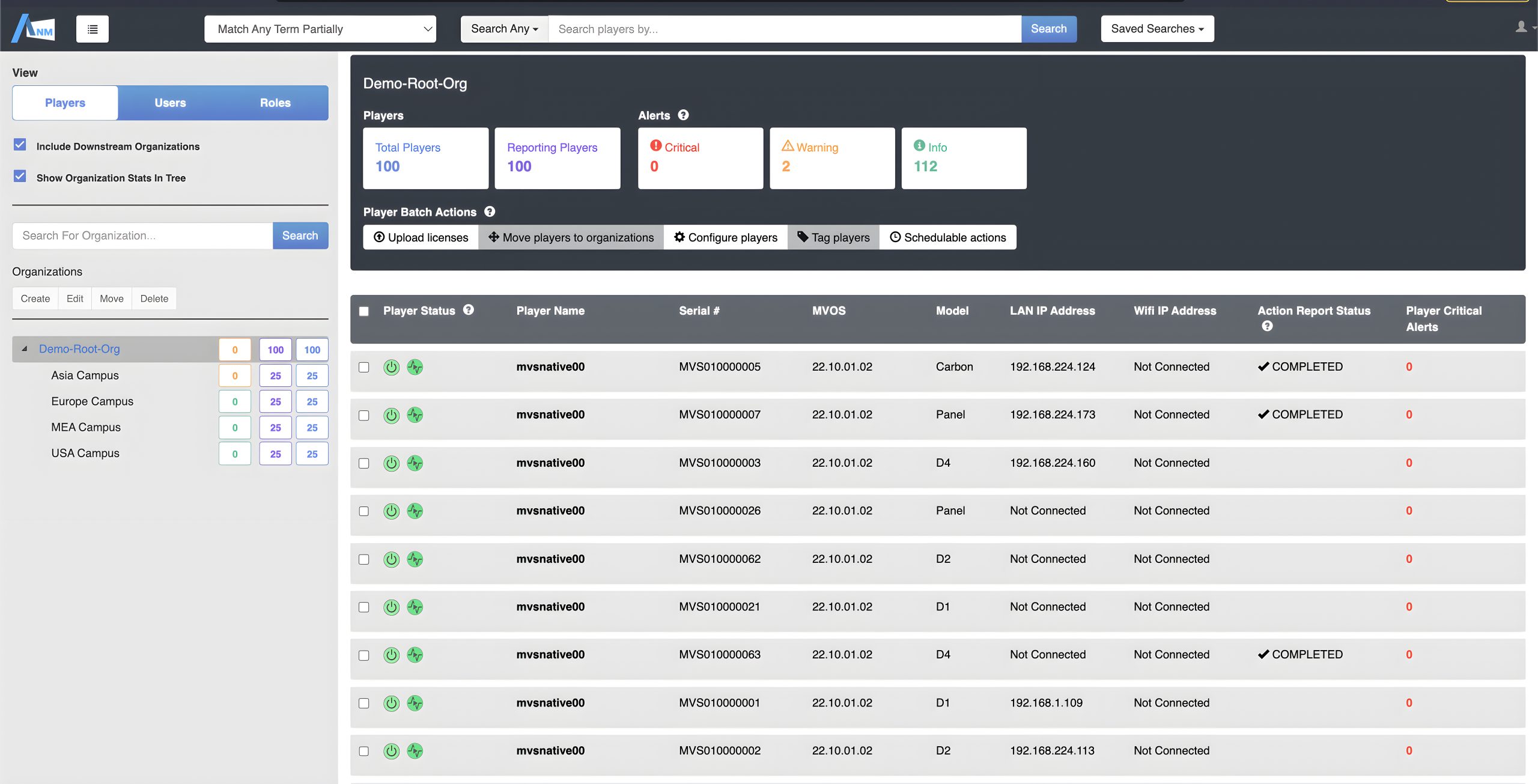
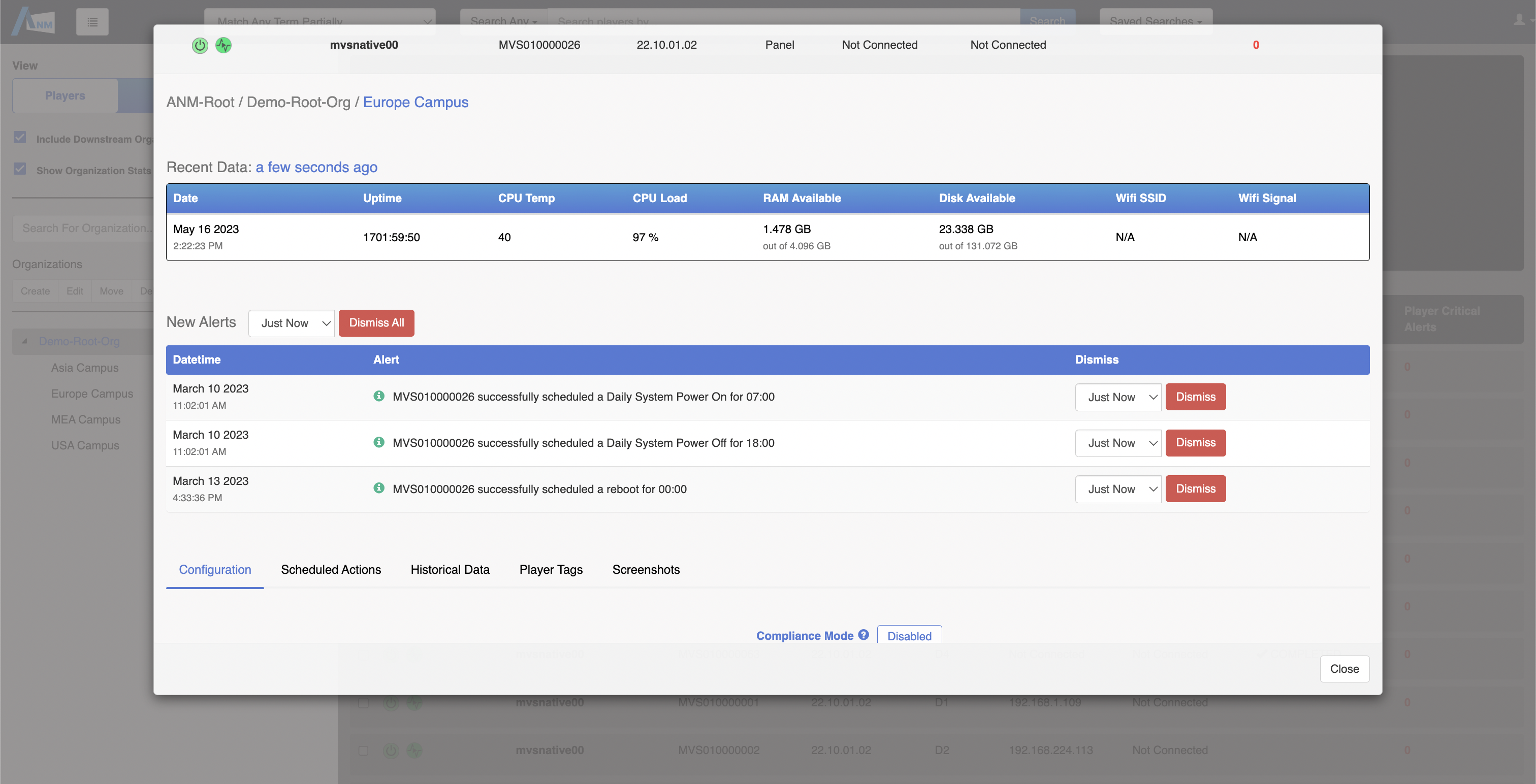
2. Scroll down until you get to the configuration menu
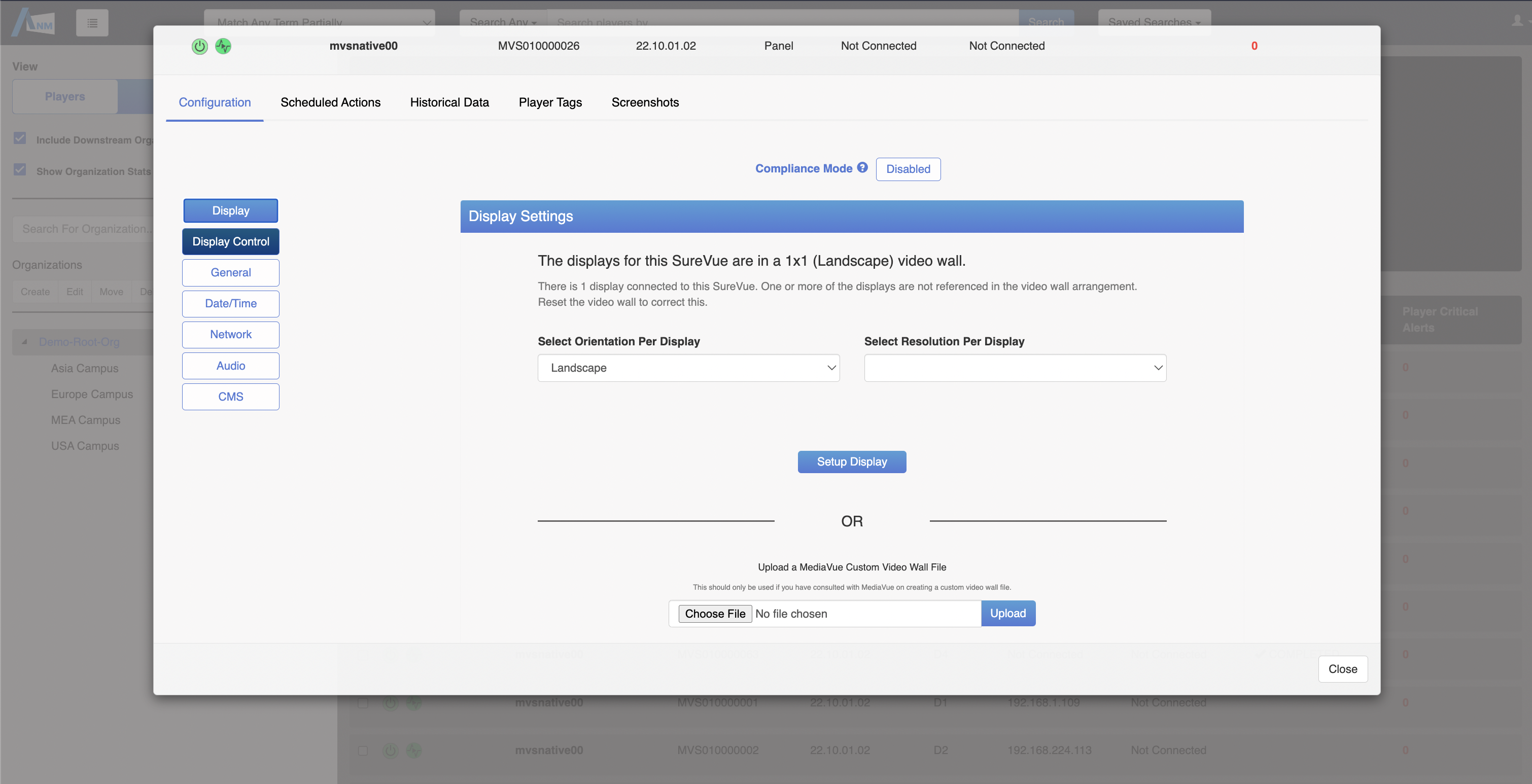
3. Select “Display Control”
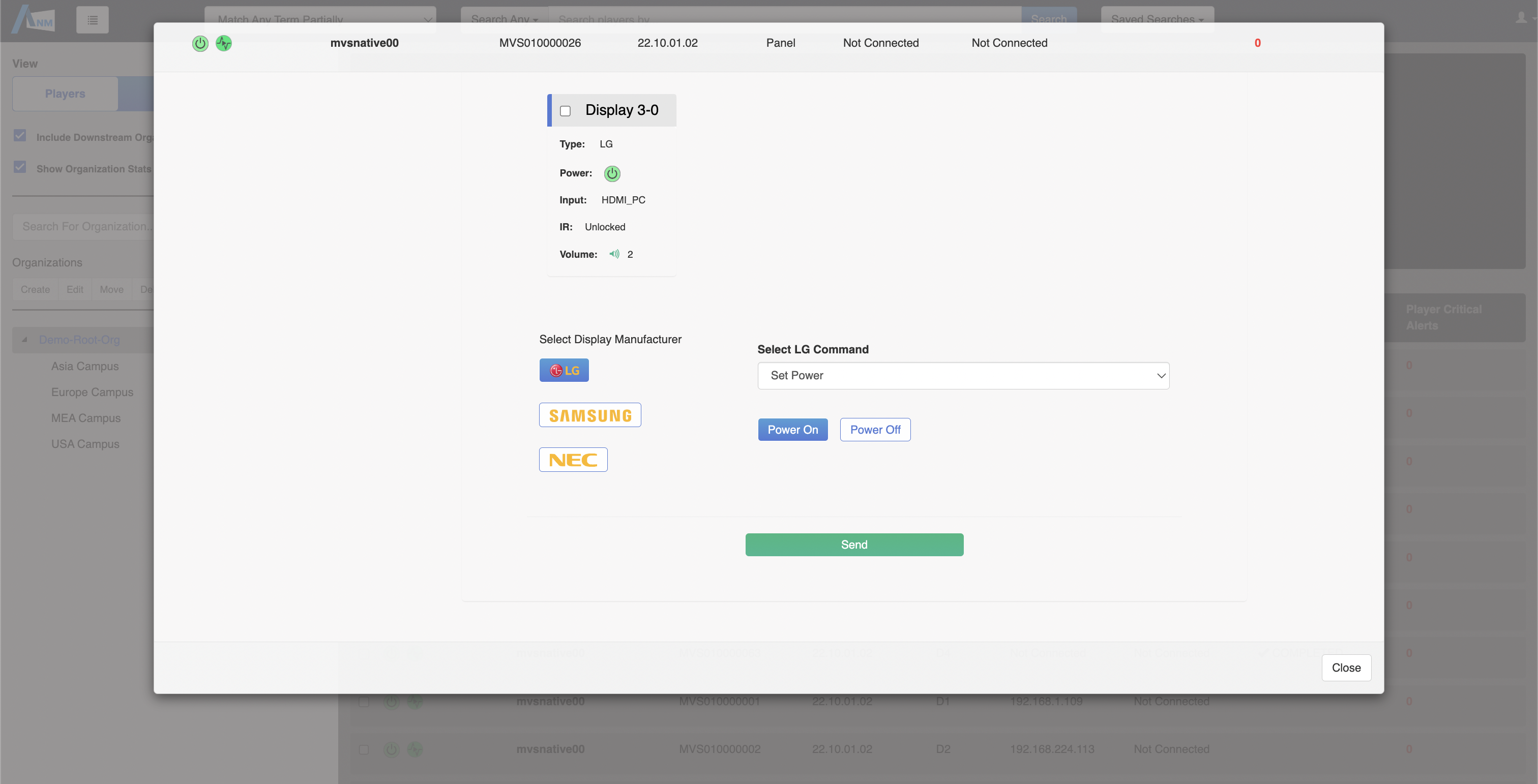
4. You will be presented with how many screens are available for control.
5. Select the display manufacturer, and the specific prebuilt command using the drop down menu.
6. To Schedule power commands, use the “scheduled actions” tab on the player’s configuration menu
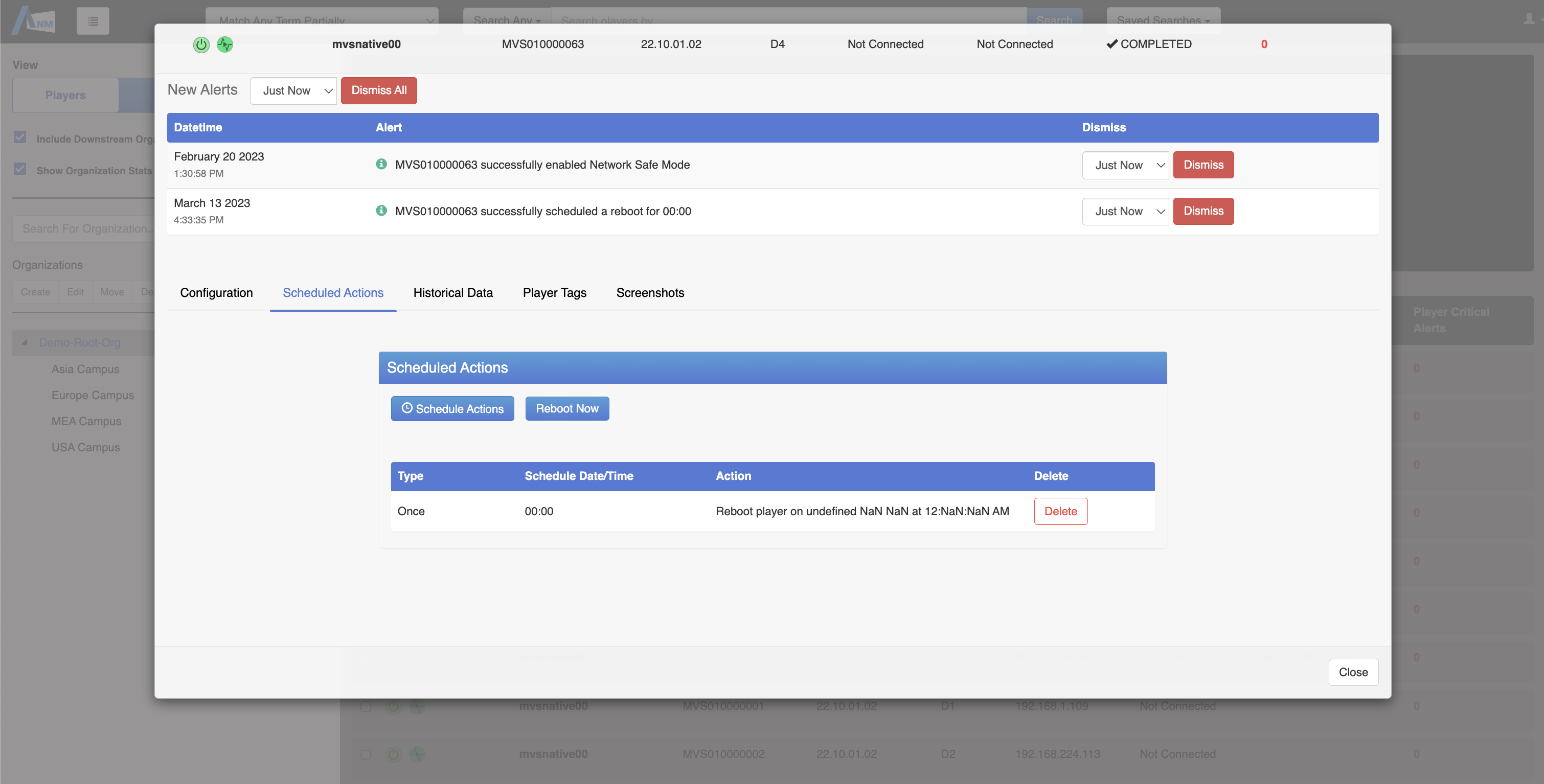
After selecting “Display command” from the drop down, you will be presented with the following screen
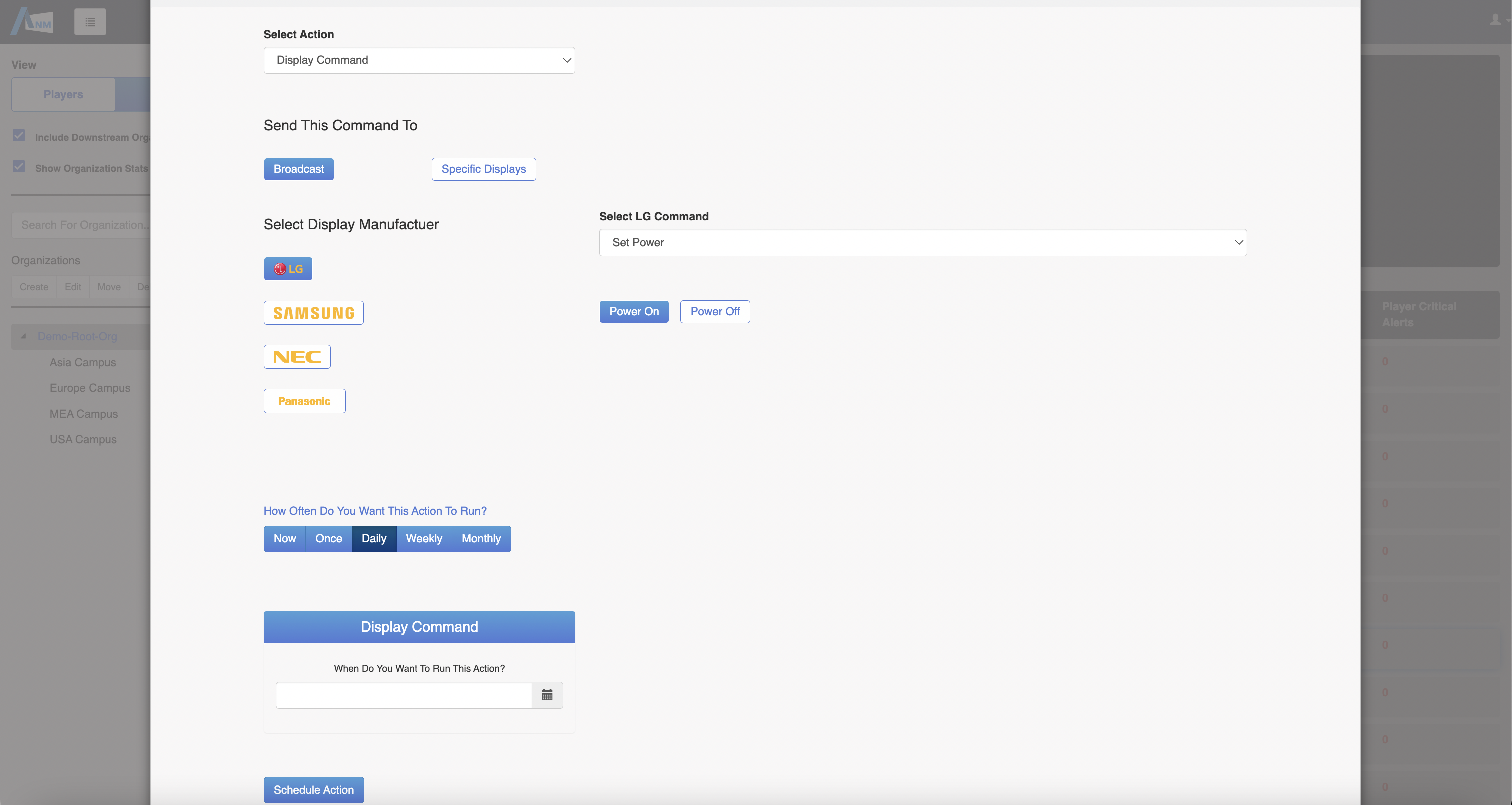
From here, you can select the frequency of the displays power schedule
Alternatively, you can also power schedule your screens in batches. This can be done from the main dashboard by selecting “Scheduleable actions” on the top Ribbon. You will then be asked to select the number of players/screens you wish to configure as a batch.
Once you have set up the power schedule for the screens, the screen will automatically turn on or off at the specified time. This feature is especially useful when managing large populations of players as it enables you to perform power actions without physically accessing each screen. For instance, you can power down all the screens in a specific location after business hours, or reboot all players at a specific time.
In addition to power scheduling, enabling “Compliance Mode” can be useful in locking in your screens power schedule. You can learn more about Compliance mode with this guide.
For any assistance with setting up power scheduling for your SureVue device or screens, please contact a support specialist : sales@assured-systems.com
For more information on ANM, please see the following : Active Network Manager
Display options for power scheduling include LG, Samsung, and NEC.